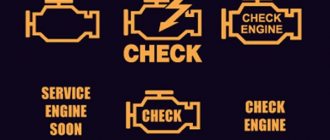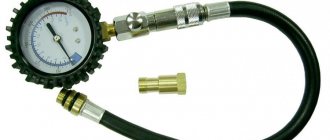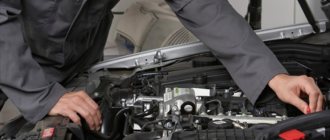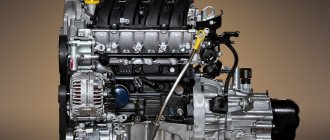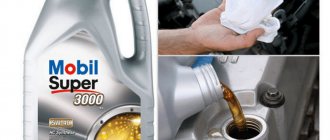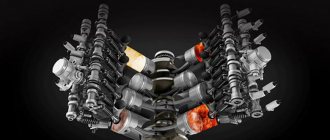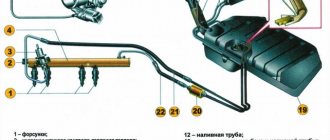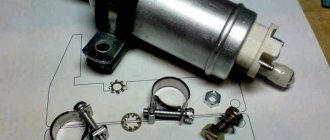Causes of malfunction
Fuel injector clogged
It may be clogged with particles in the fuel. Considering the very high accuracy of its dosage, which can be found out more precisely on avtonov.com, the nozzle must be completely controlled. To ensure that the dose is injected into the combustion chamber and does not exceed the norm, the supply tubes are made narrow. As a result, they can easily become clogged if the gasoline contains impurities.
If the injector becomes clogged, the engine's performance will be immediately limited. The car accelerates slowly or lacks power while driving. In addition, the engine idling is uneven, and problems arise when starting it.
Fuel filter
The task of the fuel filter is to clean gasoline/diesel fuel from contaminants. If the filter becomes clogged, this will reduce its throughput, while simultaneously reducing the amount of fuel entering the injectors.
As a result, the car has problems with acceleration. The fuel filter is a consumable item that must be replaced periodically.
Flow meter contamination
The purpose of the flow meter is to measure the mass of air that enters the engine intake manifold. Based on this information, the computer selects the right amount of fuel to suck out air and prepare a stoichiometric mixture.
The flow meter sensor may be dirty, causing incorrect data to be sent to the computer. The amount of fuel supplied will be insufficient, which will ultimately cause a loss of engine power. In this case, the Check Engine light may also come on.
Fuel leak
Losses through the fuel line can be significant, as a result of which a sufficient amount of fuel will not be supplied to the injector. This malfunction not only leads to loss of power, but also to dangerous situations.
If you smell gasoline in your car or a puddle constantly forms under the bottom, you need to take it in for diagnostics.
Vacuum leak
Here the situation is similar with a contaminated flow meter, only in the other direction. If additional air is introduced into the system, estimated by the computer, the fuel to air ratio will not be matched.
As a result, the engine does not gain full power during acceleration. Additionally, the Check Engine light may come on.
Catalyst worn out or clogged
A clogged catalyst will lead to poor exhaust flow, which will also affect the amount of fuel allowed into the cylinders. In this case, the engine temperature will be higher, the vehicle will accelerate slowly, and there will be a lack of power.
Unfortunately, problems with the catalyst usually result in expensive repairs. The first thing a mechanic will do is check the fuel system for any problems or leaks. The following are subject to inspection:
- injectors,
- fuel pump and filter,
- air mass meter.
As well as other elements that affect the dynamics of the engine. It may be necessary to perform diagnostics on a regular basis during a test drive.
Dirty air filter
For its operation, the engine uses not only fuel, but also oxygen, which is sucked from the atmosphere. It passes through the air filter and is mixed with gasoline to create a combustible mixture that is injected into the combustion chambers. If the air filter is old and has not been changed for more than a year, then its cells become clogged with dirt and allow much less air to pass through than before. This means that there may be interruptions in the preparation of the correct composition of the combustible mixture, and the efficiency of the engine decreases. He just stops pulling well.
Therefore, it is recommended to replace the air filter at least once a year. If the average annual mileage of the car is high, then the filter must be changed every 15 thousand km.
Unlimited power. Why is rear-wheel drive car better than front-wheel drive? More details
Injection cars
With this design of the fuel system, there are fewer options for incorrect behavior of the car during acceleration. And special diagnostic tools will help identify problems associated with fuel equipment, and this is a direct route to the nearest service station. You are unlikely to be able to fix the problems yourself.
The main reasons for poor acceleration or jerky acceleration include low fuel pressure in the system, failure of the mass air flow sensor and air sensing sensor. Possible acceleration problems may arise due to a malfunction in the ignition system, which can also be identified using special diagnostic equipment for components.
In most cases, problems with acceleration arise on the road (and this is natural), when it is not possible to quickly get to a car service center. In such cases, it is possible to carry out diagnostics yourself; for this you need to visually inspect and check the reliability of the connection of the wires to the ignition coils. You can also start the car engine and open the hood to listen to the engine running. The clicks of electricity during breakdown should be clearly audible, and in dim lighting you can still see the spark itself.
There is such a malfunction as the failure of one or more engine cylinders. It manifests itself in a noticeable decrease in engine power: the car accelerates poorly and has difficulty negotiating various inclines. This malfunction can be identified visually by inspecting the running engine. Strong engine vibration will be noticeable, the sounds of the exhaust system will change, and the idle speed will begin to change. In addition, fuel consumption will increase significantly. As a result, a decrease in engine power leads to its unstable operation and inadequate behavior during acceleration. There is only one solution - engine repair.
As you can see, in cars with a fuel injection system you can do little on your own, without special equipment, and experiments here are extremely undesirable. If any problems or malfunctions are detected, the surest remedy is to contact specialists.
What to do if your car engine power drops
An article about a decrease in car engine power - signs of the problem, reasons for the decrease in power and ways to eliminate them.
At the end of the article there is a video about the reasons for the drop in engine power. Contents of the article: During daily operation, the technical condition of the car gradually deteriorates, and here, unfortunately, there are absolutely no exceptions. The reason for this is the constantly increasing mileage, as well as the irreversible process of wear and tear of the main components, assemblies and assemblies, which, even with proper and timely maintenance, sooner or later begin to malfunction, break down or simply fail. As practice shows, most often motorists are faced with problems associated with engine malfunctions, and one of the most common of them is a decrease in engine power.
As a rule, problems with the fact that engine power has dropped arise suddenly - just yesterday the car demonstrated confident acceleration and easily climbed the steepest hills, but today it requires constantly revving the engine to high speeds in order to maintain the previously usual pace, accelerates slowly and with difficult to cope with even small loads. Experts call the main reason for the drop in engine power a drop in the power of the power unit, which can be caused by a variety of malfunctions. Be that as it may, it is necessary to eliminate the malfunction as soon as possible, otherwise it can result in very serious consequences, fraught with long and expensive repairs. If you notice that the car has become noticeably slower to accelerate, and its optimal speed has decreased by 15-20 %, know that these are some of the most obvious signs indicating a drop in the power of the power unit. In addition, you should not ignore a number of secondary signs that can also notify the car owner of existing problems with the engine revving. Among them:
- The appearance of black, white or any other unusual shade of smoke coming from the exhaust system;
- The appearance of “terry” carbon deposits on the spark plugs;
- Unstable engine operation at idle;
- A sharp and, at first glance, groundless increase in fuel and oil consumption.
The appearance of any of the above signs is a reason to begin troubleshooting yourself as soon as possible or seek help from specialists. From the variety of reasons that cause a drop in the power of a car’s power plant, we have selected the most common ones and also prepared a number of recommendations for eliminating them:
- DCPV malfunction. There are cases when the crankshaft position sensor untimely sends a command to start supplying the air-fuel mixture, as a result of which a decrease in the power of the internal combustion engine may be observed. The cause of the malfunction may be a delamination of the damper or a misalignment of the toothed star. To fix the problem it is necessary to replace the damper.
- Increasing/decreasing the distance between the spark plug electrodes. During operation of the machine, the distance between the electrodes of the spark plugs may change, which can be identified and eliminated by simply measuring and adjusting the gaps.
- Breakdowns or carbon deposits on the spark plugs, which can cause a decrease in engine power. You can identify a faulty spark plug using a special stand, and then replace it.
- Clogged air or fuel filter. In both the first and second cases, cleaning the filter or replacing it completely can help.
- Low pressure in the fuel pump. This malfunction can be identified by taking special measurements, as well as checking the quality of functioning of the fuel pump filter. To solve the problem, you need to clean or replace the fuel pump filter, or replace the pump completely.
- Failure of the knock sensor. If this malfunction is present, the internal combustion engine malfunction indicator must light up on the dashboard. To eliminate the problem, it is recommended to restore the integrity of the contact group, as well as install a new sensor.
- Depressurization of the exhaust system, which can be easily identified by inspecting the main components while the internal combustion engine is operating at medium speeds. The solution to the problem is to replace the exhaust manifold gasket and tighten all seals.
- Problems in the operation of the electronic control unit (ECU). In most cases, the ECU is highly reliable and durable, but there are cases of its complete breakdown or a simple software failure. This malfunction can be eliminated by reinstalling the software or completely replacing the ECU.
- Camshaft cam wear. The problem can be identified by visual inspection of the element, and eliminated by replacing the camshaft with a new one.
- Failure of the oxygen sensor, which is accompanied by the “Check engine” light coming on on the instrument panel. In this case, it is necessary to check the integrity of the heating coil, as well as measure the resistance force and output voltage. The problem is solved by repairing the sensor, restoring the quality of the wiring and cleaning all the holes through which air is leaked.
- There is a malfunction of the throttle position sensor, which is also accompanied by the “Check engine” lamp coming on. The malfunction can be eliminated by cleaning the throttle assembly and restoring the integrity of the contacts, as well as completely replacing the sensor if it fails.
- Contamination of the catalyst or exhaust system, which is recommended to be eliminated by completely replacing the component. At the same time, you should be prepared for the fact that replacing the catalyst will cost a tidy sum, which is due to the presence of a certain amount of noble metals in it.
- Mechanical problems with the engine, which can only be identified by contacting specialized service stations, where specialists will carry out all the necessary diagnostics. In this case, you should be prepared for the fact that the problem of a decrease in power may be the end of the engine’s life, which threatens its expensive overhaul or replacement.
- Lack of vacuum in the intake manifold, which can be restored by installing new gaskets between the manifold and the engine.
- Incorrect engine adjustment, which most often occurs when independently adjusting the gaps between the valves, so if you are not specialists in this field, it is better to entrust engine adjustment to specialists.
In addition to the reasons mentioned above, the reason for the decrease in internal combustion engine power may be incorrect adjustment of the gas pedal travel, which prevents the throttle valve from fully opening, or the use of low-quality fuel. In the latter case, there may be not only a drop in engine power, but also problems with its starting. To solve the problem, it is recommended to completely drain the old fuel and fill in new fuel as soon as possible, since otherwise the car owner can simply “kill” the engine. After the reasons for the drop in engine power have been identified and the problems have been eliminated, you can think about increasing and restoring former efficiency of the power plant, for which quite simple, but no less effective methods can be useful, including:
- Using fuel with a higher octane number, which will allow for greater power when gases explode.
- Using a special lubricant “Suproteka”, which allows you to restore heavily worn metal surfaces.
- Replacing the standard air filter with an improved one, which will provide a significant increase in engine power.
- The installation of direct flow, which is so loved by owners of domestically produced cars, which, on the one hand, will increase the engine output, and on the other, will reduce the acoustic comfort when driving.
The list of “folk” methods for increasing power goes on and on, but most of them, if used ineptly, can play a cruel joke and only harm the operation of the engine. Every year, cars become more and more technologically advanced and are literally stuffed with electronics, which makes it impossible to independently diagnose them and elimination of identified faults.
Therefore, if you do not have the necessary skills and knowledge, it is better to entrust the repair of your “iron horse” to professionals, which will save not only your strength and nerves, but also money. The reasons for the drop in engine power are in the video:
Tags
Advice for motorists An article about a decrease in car engine power - signs of the problem, reasons for the decrease in power and ways to eliminate them. At the end of the article there is a video about the reasons for the drop in engine power.
Interesting articles:
fastmb.ru
Wear of parts
Why doesn't the car accelerate or pull? In some cases, this may be due to high levels of engine wear. Usually seen on fairly old machines. Most often, the rings suffer, and as a result, compression decreases. Therefore, the first thing to do when reducing power is. If the indicator is less than 11 in at least one cylinder, then a major overhaul of the engine will have to be done.
Sometimes a decrease in engine power indicates the presence of carbon deposits on the valves; this can only be checked by removing the cylinder head. Indirect signs:
- Changing the ratio of gases in the exhaust;
- The "check" is lit on the panel.
To fix this, you will have to clean the valves. After this work everything should be back to normal.
Analysis of the causes of poor engine traction and possible repairs
Fuel filter dirty
This may be due to low-quality gasoline (containing various small debris) or infrequent cleaning of the fuel tank. In this case, you will have to completely replace the entire filter system.
Jpg” alt=”Replacing the fuel filter VAZ 2114″ width=”1024″ height=”389″ class=”lazy lazy-hidden size-full wp-image-5686″ srcset=”” data-srcset=”https:// vazremont.com/wp-content/uploads/2018/06/foto-2-1..jpg 300w, https://vazremont.com/wp-content/uploads/2018/06/foto-2-1-768× 292..jpg 660w" sizes="(max-width: 1024px) 100vw, 1024px">
Fuel pump diaphragm clogged
The cause of the blockage, as a rule, is low-quality gasoline. To clean it, just remove the diaphragm and rinse it thoroughly or blow it with air.
Jpg" alt="Fuel pump mesh" width="650″ height="458″ class="lazy lazy-hidden size-full wp-image-5687″ srcset="" data-srcset="https://vazremont.com /wp-content/uploads/2018/06/foto-3-1..jpg 300w" sizes="(max-width: 650px) 100vw, 650px">
Malfunction of the sensor that controls air flow
This is the most common reason why the VAZ 2114 does not work.
Signs of malfunction:
- Engine idle speed is too high or low;
- intermittent engine idling;
- disturbed acceleration dynamics. The car becomes uncontrollable and often freezes.
It is worth periodically checking the operating condition of the air flow meter to avoid wasting time and money diagnosing the engine.
Air filter dust
The more the filter is clogged with dust, the less air flows to the engine, therefore, the thrust decreases. What can be done in this case? Ideally, the filter should be replaced with a new one, but if this is not possible, you should remove the filter, tap and blow to remove large debris (flies, dry leaves, insects).
Jpg" alt="Replacing the air filter" width="650″ height="371″ class="lazy lazy-hidden size-full wp-image-5688″ srcset="" data-srcset="https://vazremont. com/wp-content/uploads/2018/06/foto-4-1..jpg 300w" sizes="(max-width: 650px) 100vw, 650px">
Clogged injectors
If the injector nozzles are clogged, you will have to go to a service station for ultrasonic cleaning, or purchase a special cleaning liquid.
Auto mechanics advise purchasing only high-quality injector cleaning products, for example, Wynn's (Vince), LIQUI MOLY, Carbon Clean.
Data-lazy-type=”image” data-src=”https://vazremont.com/wp-content/uploads/2018/06/foto-5-1.jpg” alt=”Cleaning injectors” width=”650 ″ height=”341″ class=”lazy lazy-hidden size-full wp-image-5689″ srcset=”” data-srcset=”https://vazremont.com/wp-content/uploads/2018/06/foto -5-1..jpg 300w" sizes="(max-width: 650px) 100vw, 650px">
The procedure itself is quite simple: the cleaning agent needs to be poured into the gas tank. But this method can only help if the fuel system is not very dirty. An engine with several hundred thousand kilometers will most likely need a complete replacement of injectors.
Complete wear of the clutch disc
You can determine disk wear by the following signs:
- the pedal is easily “recessed”, but does not return;
- the clutch slips;
- when the clutch is engaged, a noticeable vibration occurs;
- it is impossible to disengage the clutch.
Data-lazy-type=”image” data-src=”https://vazremont.com/wp-content/uploads/2018/06/foto-6-1.jpg” alt=”Replacing the clutch disc” width=” 650″ height=”415″ class=”lazy lazy-hidden size-full wp-image-5690″ srcset=”” data-srcset=”https://vazremont.com/wp-content/uploads/2018/06/ foto-6-1..jpg 300w" sizes="(max-width: 650px) 100vw, 650px">
There is another way to check wear: if you try to move off in fourth gear and the engine stalls, then there are no problems with the disc. If the engine continues to run, then the clutch disc will probably have to be replaced.
Poor spark plug performance
There are several signs by which you can identify a faulty spark plug:
- at idle the engine makes an unpleasant noise;
- a sharp press on the gas causes power failures;
- the engine runs unevenly;
- increased fuel consumption with reduced power;
- the spark plugs are filled with gasoline.
Data-lazy-type=”image” data-src=”https://vazremont.com/wp-content/uploads/2018/06/foto-7-1.jpg” alt=”Checking spark plugs at the stand” width= »650″ height=»335″ class=»lazy lazy-hidden size-full wp-image-5691″ srcset=»» data-srcset=»https://vazremont.com/wp-content/uploads/2018/06 /foto-7-1..jpg 300w" sizes="(max-width: 650px) 100vw, 650px">
Visual inspection of the spark plugs can also help identify the problem. If the candle is covered with dark oil, has a gloss or velvety soot, then this clearly indicates problems.
Defective spark plugs must be replaced with new ones.
Insufficient compression in cylinders
This defect appears due to high wear of the entire cylinder-piston system. As a result, the car owner notices that oil consumption increases, the combustible mixture does not burn completely, and fuel enters the crankcase. This problem is serious and can be solved either by replacing the piston rings or by completely repairing the engine at a service station.
Jpg" alt="Compression measurement in cylinders" width="650″ height="347″ class="lazy lazy-hidden size-full wp-image-5692″ srcset="" data-srcset="https://vazremont .com/wp-content/uploads/2018/06/foto-8..jpg 300w" sizes="(max-width: 650px) 100vw, 650px">
Malfunction of the electronic engine control unit (ECU)
There may be several signs of an ECU malfunction:
- various mechanical damages on it;
- lack of indicators from various sensors monitoring systems;
- absence of control signals for the fuel pump, vehicle idle system and other mechanisms controlled by the ECU.
Data-lazy-type=”image” data-src=”https://vazremont.com/wp-content/uploads/2018/06/foto-9.jpg” alt=”ECU diagnostics” width=”650″ height =»408″ class=»lazy lazy-hidden size-full wp-image-5693″ srcset=»» data-srcset=»https://vazremont.com/wp-content/uploads/2018/06/foto-9 ..jpg 300w" sizes="(max-width: 650px) 100vw, 650px">
Sufficient engine power is a necessary condition for normal vehicle operation. But what to do when the diesel engine doesn’t work, even though there are no “multi-colored” smokes? Nothing - come to our service center as soon as possible. But first, find out the possible theoretical reasons for this phenomenon, so as not to suspect mechanics of “auto deception” that costs extra money.
Why does a car accelerate poorly?
The spark plug is one of the reasons for the loss of dynamics
Vehicle performance can be degraded due to many factors.
Below are the main reasons why an engine accelerates poorly:
- Incorrect motor operation. This may be due to a decrease in the compression level in one or several cylinders at once. In addition, the problem may be the leakage of additional air into the engine intake tract. Often the dynamics are disrupted when the intake system becomes coked or when the exhaust gas converter breaks down.
- Incorrect operation of the power system. If the fuel filter element or injectors are clogged. The fuel supply pipes may also be clogged. In some cases, problems are caused by insufficient fuel pump supply or the use of low-quality gasoline.
- Problems with the ignition system. When spark plugs have expired or there is a breakdown in high-voltage wires. A check needs to be done.
- If the sensors of the engine control system fail. For example, if one of the regulators breaks down, the ECU begins to function according to an additional backup program. Such a program is launched so that the motorist can get to the service station or garage. At the same time, the economic and power parameters of the motor are significantly reduced.
- When the clutch slips, which often occurs as a result of misadjustment or wear. A thorough diagnosis of the mechanism should be carried out.
- Insufficient air pressure in the tires. It is necessary to check and, if necessary, bring the pressure level to the required level.
- Also, deterioration in dynamics may be due to vehicle overload.
- Incorrect operation of the braking system, which may be caused by the wheels braking while driving or incorrect adjustment of the hand brake. There is a diagnostic option. You need to find a smooth road, preferably one where there is no wind during the test.
The point is to carry out a run-down run of the car. Refuel the vehicle; only you should be inside the car. The car accelerates to 50 km/h, after which the neutral gear is engaged and the car drives until it stops on its own. A similar procedure is repeated one more time, only in the opposite direction. You need to measure the car's run-out based on driving in both directions; on average it should be approximately 0.5 km.
Causes of engine power loss - DRIVE2
Intensive use of a car leads to a rapid increase in its mileage. In this regard, the technical condition of the machine deteriorates if its units and elements are not monitored. This applies not only to suspension parts, but also to engine components. Often, motorists have to deal with various malfunctions in the operation of the engine, one of which is a drop in its power. Moreover, this unpleasant symptom usually appears suddenly. Just yesterday the car perfectly demonstrated its speed qualities, quickly accelerated and confidently conquered hills, but today it is not at all quick and agility, because when accelerating it stopped obeying the gas pedal.
Main reasons
Many owners are scratching their heads, inventing reasons for the drop in engine power. Unfortunately, it is not immediately possible for even experienced specialists to make a correct diagnosis as to what caused the drop in engine power. This malfunction should be eliminated as soon as possible in order to avoid even more serious consequences and costly repairs. The main reasons for the deterioration of internal combustion engine traction include:
Clogged air filter - it is worth noting that for replacing the air filter, there are scheduled deadlines calculated for average operating conditions of vehicles. In the summer, many motorists quite often go out of town, where, as a rule, dirt roads predominate. If you are on the road, looking in the rearview mirror, and periodically notice a plume of dust accompanying your car, then be prepared for an emergency filter replacement.
Note! Trying to save on consumables, some motorists knock out the air filter and then put it back in place. It is strictly not recommended to carry out such actions. The fact is that when the filter is knocked out, dust particles still remain, settling on its reverse side, and this is fraught with their entry into the engine and premature wear of its parts. ❗
Electrical interruptions - the control unit is responsible for the electrical part of the machine. It controls the injection of the fuel mixture, is responsible for its ignition at the right moment, and monitors the performance of all sensors. One of the common cases when a car loses its power is when either a too lean or too rich fuel mixture gets into the engine cylinders. It is obvious that one or more sensors are not working properly. Engine diagnostics will help deal with the problem, as a result of which the mixture parameters will become known, and based on them, conclusions will be drawn about the causes of the malfunction.
If there is a drop in power when the engine heats up, then diagnostics will also help make the correct diagnosis.
Difficult functioning of the intake and exhaust systems - various obstacles encountered in the path of the intake and exhaust systems inevitably lead to a drop in power. Thus, in addition to a clogged air filter, damage to the catalytic converter can “choke” the engine. Its internal structure resembles a honeycomb, which becomes clogged over time and impedes the passage of exhaust gases. The situation can be corrected by replacing the neutralizer.
Failure of the ignition system - often a decrease in engine power occurs due to the fact that the spark plugs do not supply a spark in a timely manner. Ignition delays or advances inevitably lead to interruptions in the operation of the internal combustion engine. If you notice not only a deterioration in the car's power when accelerating, but also strong engine vibration at idle, then the first thing you should do is check the condition of the spark plugs.
If one of them turns out to be non-working, you need to replace it. However, this does not always solve the problem. Installing a spark plug can only temporarily eliminate the problem, which will appear again after a few days. Then it becomes obvious that the issue is not the candles. The next element that comes under suspicion is the high-voltage wire connecting to the non-functioning spark plug. It is probably partially burnt out from the inside and returns to service only when working with new spark plugs, without ceasing to spoil them. A new set of high-voltage wires will help correct this kind of breakdown, after installing which the cause of the interruption should be eliminated.
Violation of the valve timing - it happens that the camshaft pulley jumps one tooth of the timing belt, and the valve timing is confused, and this causes a sharp deterioration in the traction of the internal combustion engine. Operation of the air conditioner - a loss of power can be observed when the air conditioner is turned on. This disadvantage is typical for many vehicles and is especially noticeable in cars equipped with liter engines. If, with the air conditioner turned off, the car demonstrates good dynamics and rapid acceleration, then you have no reason to worry.
Problems with the engine - this may be a malfunction of hydraulic compensators, burnout of valves or violation of the gaps between them. A drop in power, which occurs gradually, can be caused by a decrease in compression in the cylinders. This is a reason for a more detailed inspection of the motor and its internal components.
Solving the problem of deteriorating vehicle traction
In any case, the problem of a drop in vehicle power cannot be ignored. Having made itself felt today, it will progress every day and cause more and more inconvenience and will ultimately damage the engine. Timely computer diagnostics and a thorough inspection of the car by a qualified specialist will help you get rid of the malfunction. Of course, you can replace spark plugs, high-voltage wires, and an air filter yourself, if such a need arises. But if, after installing new parts, the behavior of your personal vehicle has not changed for the better, it is worth sending it for diagnostics to a specialized service, where experienced technicians will diagnose the cause of the deterioration in traction of your car.
Taken from here: Auto community 1mobi.net
www.drive2.ru
Why is it important
A car that accelerates slowly is a hazard, especially at intersections. Delay in repairing a small fuel system problem can lead to a serious accident.
- From the very start, pressing the gas pedal to the floor, the driver hardly feels any feedback from his iron horse, the car either picks up speed very slowly or does it jerkily;
- The problem may occur when overtaking. Drivers often describe it this way: “when I try to overtake a car, I change lanes, press the gas pedal to the floor, but the car doesn’t move, it feels like someone is holding it by the rear bumper.”
The car does not accelerate
There can be a great many such descriptions, but the reasons for such behavior of the car are often the same.
First of all, this is, of course, the wrong job:
- Motor unit;
- Fuel system malfunction;
- Ignition system or electrical circuit.
The design of the car’s fuel system (injector or carburetor) is also important.
Solving the problem of deteriorating vehicle traction
In any case, the problem of a drop in vehicle power cannot be ignored. Having made itself felt today, it will progress every day and cause more and more inconvenience and will ultimately damage the engine. Timely computer diagnostics and a thorough inspection of the machine by a qualified specialist will help you get rid of the problem.
Replacing spark plugs, high-voltage wires, and an air filter can, of course, be done on your own if the need arises. But if, after installing new parts, the behavior of your personal vehicle has not changed for the better, it is worth sending it for diagnostics to a specialized service, where experienced technicians will diagnose the cause of the deterioration in traction of your car.
Loss of engine power on the injector and carburetor
When looking for the reason for the decrease in thrust of the power unit, you need to take into account the type of engine itself - carburetor or injection.
Let's consider the probable malfunctions for each of the options:
1. Loss of power of an injection engine can be caused by the following reasons:
- Contaminated air or fuel filter;
- low pressure created by the fuel pump;
- contamination of the fuel pump mesh;
- malfunctions of the vehicle's ECU;
- contamination of injectors;
- breakdown of the main sensors associated with the operation of the power unit;
- failure of the fuel pressure regulator;
- malfunction of the lambda probe and so on.
2. When the power of a carburetor engine decreases, the reasons may be:
- Contaminated fuel pump fittings or low pressure;
- carburetor contamination or problems with the needle valve;
- errors in regulating the composition of the air-fuel mixture;
- insufficient opening of the carburetor dampers;
- economizer valve sticking;
- decreased or excessively high fuel level in the engine (may be caused by a malfunction of the float element);
- deterioration in the capacity of carburetor jets and channels, and so on.
When the first problems appear with the traction of the power unit, you need to make a full diagnosis, determine the cause of the malfunction and be sure to eliminate it. Otherwise, the consequences may be most unpredictable. Good luck on the roads and of course no breakdowns.
According to statistics, every car owner who has been using his car for a long time experiences problems with traction; depending on the reasons, the car either accelerates poorly or cannot even move at all. In other words, the engine simply does not have enough power to cope with all the loads and gain speed and revs.
The most interesting thing is that the engine in such situations behaves as if it were completely “healthy”. You will not hear any noise, knocking, or other evidence of malfunction from it. I would like to note right away that the list of possible causes of power loss is huge and it is very difficult to describe all the faults. We will give a list of only the most common ones, and also analyze in detail their nature and possible causes of their occurrence.
Fuel system problems
If you are faced with a problem with a drop in engine power, start looking for a problem with the fuel supply system. After all, if the engine does not respond to opening the throttle or begins to stall, it is logical to assume that it simply does not have enough fuel. Your actions:
- Remember when the fine filter was changed and check its condition. A clogged filter element does not allow enough gasoline to pass through, which is only enough for idling without load.
- A common cause is a fuel pump strainer located in the tank clogged with dirt. Often, car enthusiasts ignore replacing it, installing only a new filter. To check the coarse mesh, you will have to disassemble the gas tank and pull out the pump.
- The pressure bypass valve, which dumps excess fuel back into the tank, has failed. It is checked by measuring the pressure in the fuel rail through a special fitting.
- If you smell gasoline in the closed garage where your vehicle is stored, walk along the entire fuel line, inspecting for leaks.
Note. A clogged filter is indicated by a prolonged noise from the fuel pump, heard after turning on the ignition. The unit cannot raise the pressure in the line to normal and does not turn off for a long time.
More serious problems are more difficult to detect. Both petrol and diesel engines can suffer from injector malfunction or failure. Their functionality is checked by removing and connecting to a power source. The atomizer must create an even, beautiful “torch”; otherwise, it must be replaced.
The reason for the lack of fuel in a diesel engine is often the fuel pump, which creates high pressure in the system. When the parts of the unit are worn out, the pressure in the line drops below normal, and little diesel fuel is injected into the cylinders.
We recommend: Error codes on the 16 valve VAZ-2112: self-diagnosis on the dashboard
Along with the fuel filters, it doesn’t hurt to check the air filters. Blow out the contaminated element if you cannot replace it immediately.
Loss of diesel engine power - looking for reasons
Loss of diesel engine power may be due to incorrect adjustment of the gas pedal cable
. This is one of the simplest defects that can be eliminated even on your own. A more serious reason leading to a decrease in power is insufficient fuel supply. Most often, the cause may be a depressurized fuel line or a clogged filter.
Diesel engines hold the record for the number of fuel filters; on some car models there are up to 6 of them. Many drivers don't even know about it. And contamination of even one inevitably leads to interruptions in fuel supply.
The “disease” of diesel engines - wear of the injectors and high-pressure fuel pump - leads to ineffective atomization of fuel, which is fraught with its overconsumption, a drop in power and black exhaust. Repairs of this complexity are performed exclusively in specialized centers. Most modern diesel engines are equipped with turbochargers, the failure of which leads to a host of undesirable consequences, including a decrease in power. Like injectors, turbines are repaired only at service stations.
Before you begin to understand the reasons for the decrease in power of automobile gasoline engines, you need to understand some points. Many car enthusiasts studying the description of their car and its characteristics have probably noticed that the power of a gasoline engine is always indicated in relation to the maximum crankshaft speed.
The fact is that, unlike diesel engines, the power of gasoline engines directly depends on the crankshaft speed, that is, the higher the speed, the more power the engine can produce. And if the engine, for some reason, cannot develop maximum speed, then it will not develop full power.
The reason for the decrease in crankshaft speed may be overheating of the engine, which often happens in the summer or when driving in traffic jams. By the way, it is very dangerous and should not be allowed.
Loss of engine power - causes
1. A possible reason for the drop in engine power may be incorrectly selected spark plugs according to the heat rating. You only need to install spark plugs that are recommended by the manufacturer in the car's owner's manual. Before installing the spark plugs, do not forget to check and correctly set the spark gap between the spark plug electrodes.
2. While checking the spark plugs, also pay attention to the high-voltage wires of the ignition system - worn and damaged wires can also cause loss of engine power.
To check the wire, you can remove it from the spark plug and bring it to the body of a running engine. Look at the color of the spark jumping between the wire and the motor housing. The spark should be blue; if it is orange or red, then a wire breakdown or other ignition problems can be suspected.
3. As for the ignition system, in addition to a weak spark, a drop in engine power may be associated with an incorrectly set ignition timing. Check the installation of this angle in accordance with the instructions for the car, and if this is difficult for you, then contact a service station specialist.
4. In modern injection engines with a fuel injection system, the ignition timing is set automatically, that is, this process is controlled by the on-board computer, and if problems arise in the electronic control unit, then you definitely cannot do without specialists.
5. For carburetor engines, problems can arise if the carburetor is adjusted incorrectly, for example, the fuel level in the float chamber is too high or too low, the accelerator pump is faulty, or the jets are clogged.
6. A clogged air filter, blocking the “breathing” of the engine, also causes a drop in power.
7. In addition, the reasons why the engine does not develop full power can be very basic, for example, such as incorrect adjustment of the accelerator pedal travel, due to which the throttle valve does not open completely, or the use of low-quality gasoline.
In principle, there are not so many such reasons and most of them can be eliminated without much effort.
As a rule, during operation, any power unit becomes less productive due to natural wear and tear. At the same time, the loss, even on engines with a significant mileage, usually averages about 10% of the declared passport value. Naturally, the driver practically does not notice such a decrease in performance.
However, if the engine's thrust is lost, the engine has lost its throttle response when the gas pedal is pressed, then operating such a power unit becomes difficult and even dangerous, and the problem itself requires a solution. At the same time, the owner may notice that the engine is difficult to start, both cold and hot. It may also appear in different operating modes of the power unit (idling, smoking under load, etc.)
Read in this article
